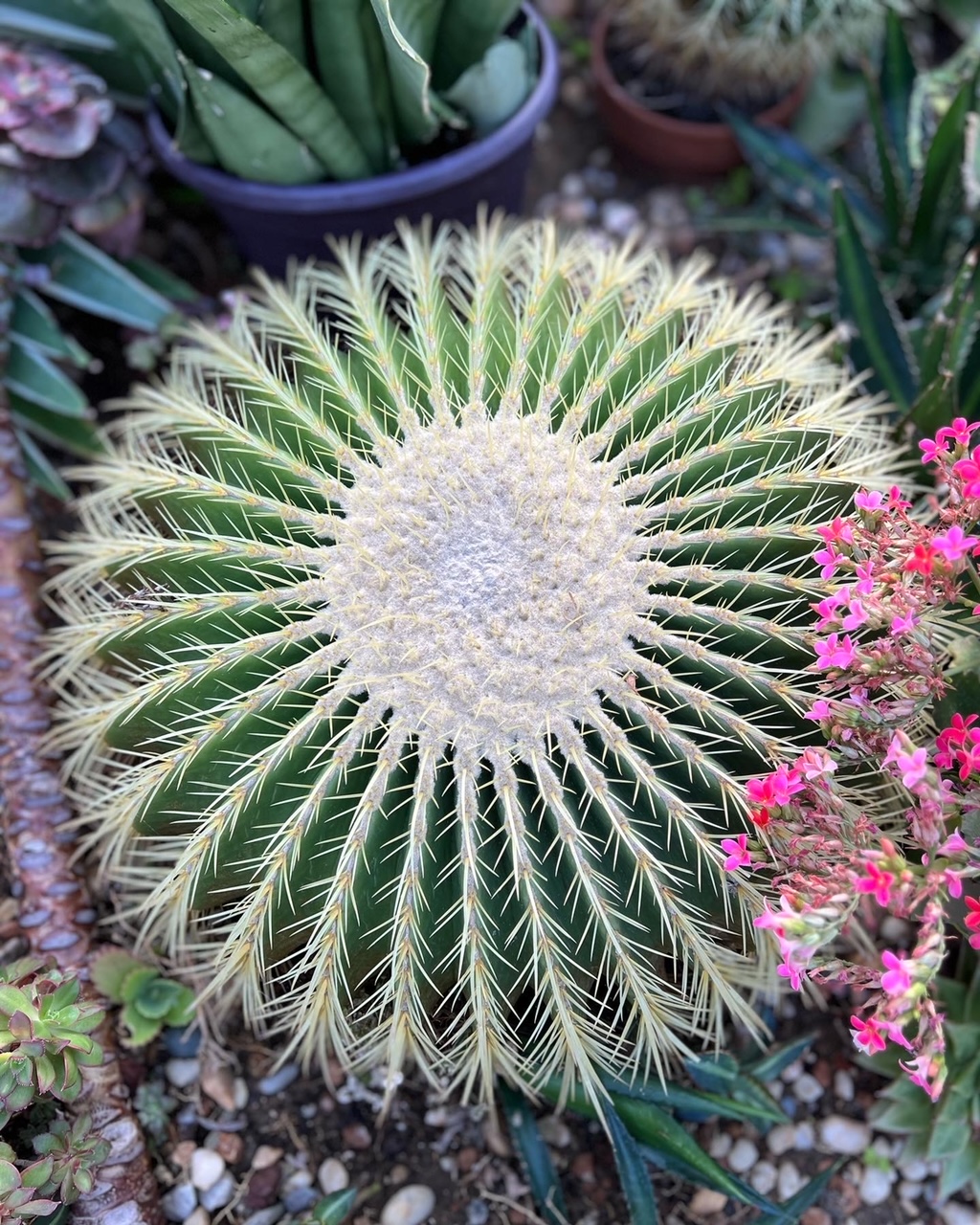Cherry Ong is taking us back to the conservatory at Centennial Park in the Toronto area. Today we’re on a visit to the arid house, which is full of plants from around the world that are adapted to dry and desert environments.
 Arid doesn’t mean boring or empty. This conservatory is full of a huge range of forms and plant shapes that fill every inch with something worth looking at.
Arid doesn’t mean boring or empty. This conservatory is full of a huge range of forms and plant shapes that fill every inch with something worth looking at.
 Ponytail palm (Beaucarnea recurvata, Zones 10–12) is often sold as a houseplant, but given ample space it will grow into a big dramatic plant like this. The swollen trunk serves to store water for dry seasons.
Ponytail palm (Beaucarnea recurvata, Zones 10–12) is often sold as a houseplant, but given ample space it will grow into a big dramatic plant like this. The swollen trunk serves to store water for dry seasons.
 You can’t have an arid house without cacti. This family of plants is native to the Americas. The swollen stems store water, and the spines keep hungry—and thirsty—animals from munching on them. Those practical adaptations also turn them into living sculptures.
You can’t have an arid house without cacti. This family of plants is native to the Americas. The swollen stems store water, and the spines keep hungry—and thirsty—animals from munching on them. Those practical adaptations also turn them into living sculptures.
 Mother-of-thousands (Kalanchoe, Zones 10–12 or as a houseplant) has attractive succulent leaves, but these nodding, bell-shaped flowers are beautiful, both when fresh and salmon-orange, and as they age and fade to pink.
Mother-of-thousands (Kalanchoe, Zones 10–12 or as a houseplant) has attractive succulent leaves, but these nodding, bell-shaped flowers are beautiful, both when fresh and salmon-orange, and as they age and fade to pink.
 Agaves (Agave species, hardiness varies by variety) are another American succulent that is popular in arid displays for their huge leaves, which are often colored blue or even variegated.
Agaves (Agave species, hardiness varies by variety) are another American succulent that is popular in arid displays for their huge leaves, which are often colored blue or even variegated.
 The iconic golden barrel cactus (Echinocactus grusonii, Zones 9–12) is hugely popular in dry, warm landscapes but is endangered in the wild due to habitat destruction for agriculture and grazing.
The iconic golden barrel cactus (Echinocactus grusonii, Zones 9–12) is hugely popular in dry, warm landscapes but is endangered in the wild due to habitat destruction for agriculture and grazing.
 Aloe is an African genus of succulents with many different species, ranging from small rosettes to tall ones like this with their beautiful succulent foliage.
Aloe is an African genus of succulents with many different species, ranging from small rosettes to tall ones like this with their beautiful succulent foliage.
 This is a beautiful cactus, which I think is a species of Mammillaria.
This is a beautiful cactus, which I think is a species of Mammillaria.
 A tower of small succulents makes a dramatic statement in the arid house.
A tower of small succulents makes a dramatic statement in the arid house.
Have a garden you’d like to share?
Have photos to share? We’d love to see your garden, a particular collection of plants you love, or a wonderful garden you had the chance to visit!
To submit, send 5-10 photos to [email protected] along with some information about the plants in the pictures and where you took the photos. We’d love to hear where you are located, how long you’ve been gardening, successes you are proud of, failures you learned from, hopes for the future, favorite plants, or funny stories from your garden.
Have a mobile phone? Tag your photos on Facebook, Instagram or Twitter with #FineGardening!
Do you receive the GPOD by email yet? Sign up here.
